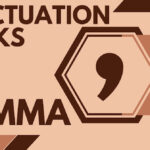Introduction
Punctuation marks are the unsung heroes of writing. They may not be as flashy as adjectives or verbs, but they are essential for conveying meaning and creating clear, concise sentences.
Without them, our writing would be difficult to read and comprehend. One of the most important punctuation marks is the hyphen.
It might seem like a small squiggle between words, but it can have a big impact on how your writing is perceived. In this article, we will delve into the world of hyphens: what they are, why they matter, and how to use them effectively.
The Importance of Punctuation Marks in Writing
Punctuation marks serve several key functions in writing:
-
They convey tone: Exclamation points and question marks indicate excitement or uncertainty respectively.
-
They provide structure: Colons and semicolons help organize ideas and create flow.
-
They prevent confusion: Apostrophes indicate possession or contractions to prevent misunderstanding.
In short, punctuation marks are crucial for effective communication. They help writers convey their intended message with clarity and precision.
The Role of Hyphens in Creating Clear and Concise Sentences
Hyphens play an especially important role in creating clear sentences by joining words or parts of words together to form compound modifiers that clarify meaning. Consider the following example:
The well known author was coming to town.
In this sentence, “well” modifies “known” but isn’t connected to it with a hyphen; this creates ambiguity about whether “well” modifies “known” or “author”. However, by adding a hyphen, we can create a compound modifier that removes all doubt.
The well-known author was coming to town.
This sentence makes it clear that “well” and “known” are working together to describe the author. Without the hyphen, the sentence might be confusing or misleading.
In addition to creating clarity, hyphens also help create concise sentences by avoiding repetition.
Consider this example:
Mary is an English teacher who teaches at a high school in California.
By using a hyphenated adjective, we can easily compress this information into a single phrase:
Mary is a California-based English teacher.
Not only does this new sentence sound more professional and concise, but it also makes it easier for readers to process the information quickly and efficiently.
What is a Hyphen?
Punctuation marks play an important role in creating clear and concise sentences.
They help readers to understand the intended meaning of a sentence, and hyphens are no exception.
A hyphen is a punctuation mark used to join words or parts of words together.
It is typically used to create compound words or to clarify the meaning of a sentence.
The hyphen is often confused with other punctuation marks like the dash or the en dash, but it has distinct differences from both.
The dash is longer than the hyphen and is used for emphasis or interruption in a sentence, while the en dash is slightly longer than the hyphen and is primarily used to indicate ranges of numbers or dates.
In contrast, the hyphen joins two words together, creating one cohesive unit out of two separate words. While it seems simple enough on its surface, understanding when and how to use a hyphen can be complex.
There are specific rules for using it that can be difficult to remember without practice and attention to detail. However, mastering these rules can make writing more impactful and professional-looking.
Rules for Using Hyphens
A hyphen is a small but mighty punctuation mark that can make a big impact on the clarity and effectiveness of your writing. Understanding the rules for using hyphens correctly is essential for any writer who wants to create polished, professional prose.
Rule 1: Use Hyphens to Join Two or More Words That Function as a Single Adjective Before a Noun (e.g. Well-Known Author)
One of the most common uses of hyphens is to join two or more words that work together as a single adjective before a noun. This helps clarify the meaning of complex phrases and makes them easier to read and understand.
For example,
consider the phrase
“a well-known author.” Without the hyphen,
this phrase could be interpreted as “a well author who is known.
” But with the hyphen, it becomes clear that “well-known” is functioning as a single adjective modifying the noun “author.”
Other examples of this type of phrase include “long-term solution,” “full-time job,” and “high-quality product.” In each case, the hyphen helps ensure that readers understand which words are working together as one unit to modify the noun.
Rule 2: Use Hyphens to Spell Out Numbers Between Twenty-One and Ninety-Nine (e.g. Fifty-Two)
Another important rule for using hyphens is to spell out numbers between twenty-one and ninety-nine with a hyphen. This helps avoid confusion when reading or writing numbers in text.
For example, consider the number fifty-two
Without a hyphen, it could easily be misinterpreted as fifty two separate units rather than one number in its entirety. But with the hyphen, it becomes clear that fifty-two represents one entity.
This rule applies whether you’re using numbers in text or writing them out longhand. So whether you’re discussing a group of twenty-three people or writing a check for $ seventy-seven, you’ll want to remember to use the hyphen correctly.
Rule 3: Use Hyphens to Indicate Word Breaks at the End of Lines in Printed Text (e.g. Com-
puter)
puter)
Hyphens can also be used to indicate word breaks at the end of lines in printed text.
This is especially important for typesetting and formatting purposes, where it’s essential to ensure that lines break in appropriate places without disrupting the flow or meaning of the text.
For example,
consider the word “computer.” If it appears at the end of a line in printed text, it may need to be broken up as “com-” on one line and “puter” on the next line.
The hyphen helps indicate where this break should occur without causing confusion or altering the intended meaning of the word.
It’s worth noting that this rule only applies to printed text, not digital or online writing.
So if you’re writing content for a website or social media platform, you won’t need to worry about using hyphens for word breaks unless they’re specifically required by your formatting guidelines.
Exceptions to Hyphen Rules
Words Without Hyphens:
While hyphens have their rightful place in creating clarity and conciseness to your writing, there are some exceptional scenarios where they are not required.
Over time, many compound words that once required a hyphen have become widely accepted without them.
These include words like “email,” “website,” and “biweekly.” This phenomenon of removing hyphens from compound words is seen as a natural progression in the evolution of language.
So, it is essential to stay updated with the changes in word usage. Moreover, another way of omitting hyphens occurs when two words combine to form new meanings or phrases.
The Gray Areas:
In certain cases, there are no clear-cut rules about whether or not to use a hyphen.
The decision comes down to how it affects readability and clarity.
While some compound words like “well-being” necessitate a hyphen between them for ease of comprehension when read by an audience unfamiliar with the language; others like “cooperation” may be more easily understood without it.
Therefore, writers need to consider context and their target audience when deciding whether or not to use a hyphen. Additionally, keeping up-to-date with current spellings often requires research beyond one’s own instincts or what one learned in school long ago!
New dictionaries every year add new lexicon as well as define nuances between similar-sounding phrases that require attention before committing them into one’s writing. Ultimately, the use of hyphens should aim to contribute to the coherence, clarity, and comprehension of your text without impeding readers’ understanding.
Examples of Hyphen Usage
Rule 1: The fast-paced thriller kept me on the edge of my seat.
One common use of hyphens is to join two or more words that function as a single adjective before a noun.
For example, in the sentence above, “fast-paced” describes the type of thriller being referred to.
Without the hyphen, this phrase would read as “fast paced”, which could be confusing for readers.
Another example of this rule in action is “well-known author”, where the hyphen clarifies that “well” and “known” are meant to be read together as one concept, rather than separate adjectives modifying “author”.
Rule 2: I scored ninety-two points in my last basketball game.
Another use for hyphens is to spell out numbers between twenty-one and ninety-nine. This rule applies even when multiple words are used to express a number (e.g. sixty-four instead of 64).
This helps ensure consistency and clarity when writing out numbers in sentences.
In the example above, using a hyphen in “sixty-four” indicates that these two words should be read together as one number.
Rule 3: My computer crashed mid-document because I hadn’t saved it yet.
Hyphens can be used to indicate word breaks at the end of lines in printed text.
While this usage isn’t strictly necessary for digital writing
, it’s still important to understand how it works especially if you’re working with printed materials like books or newspapers.
In practice, this means dividing a word with a hyphen if there isn’t enough space for it at the end of a line (as seen above with “com-puter”).
Conclusion
While they might seem like small details, proper punctuation usage including hyphen use – is essential for creating clear, concise, and professional writing.
By taking the time to understand the rules for hyphen usage and practicing with examples like those provided in this article, writers can ensure that their prose is easy to read and interpret.
So next time you’re working on a document or even just drafting an email, take a moment to double-check your punctuation and hyphen use. It may seem like a minor detail, but it could make all the difference in how your message is received!





1 thought on “Hyphen punctuation mark”